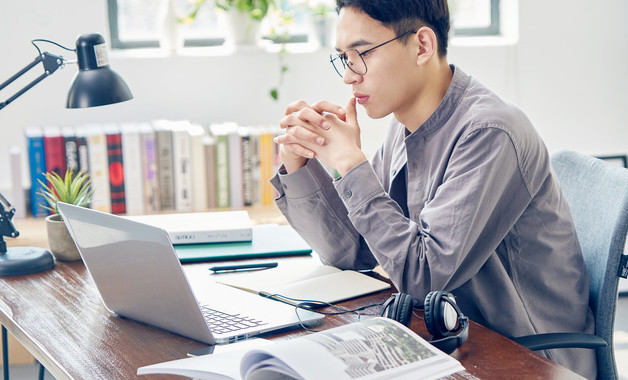- 目录
-
第1篇归元寺的导游词 第2篇游湖北归元寺的英文导游词

第1篇 归元寺的导游词
归元寺的导游词
作为一名乐于助人的导游,就难以避免地要准备导游词,导游词一般是根据实际的游览景观、遵照一定的游览路线、模拟游览活动而创作的。如何把导游词做到重点突出呢?下面是小编帮大家整理的归元寺的导游词,仅供参考,大家一起来看看吧。
归元寺的导游词1
各位游客朋友们:
大家好!首先让我代表海航乐游旅行社欢迎大家来到美丽的江城—武汉观光游览。我是您此行的导游,我姓许,大家可以叫我小许或者许导就好了,在我右手边的了是我们的司机刘师傅,刘师傅啊有多年的驾驶经验,车技相当娴熟,大家可以放心乘坐。在接下来的时间里呢,将由我为大家提供导游讲解服务。如果大家有什么问题和要求,可以尽管提出,我会尽力为大家解决。同时,在这里预祝大家有个愉快、难忘的武汉之旅。
在这春意盎然的时节,能够陪同您游览以独特的规模和五百罗汉堂,而极富盛名的归元禅寺,一同领略佛教寺院的魅力,用佛教的话来说,那可真是“随喜”了。
说着说着,我们今天游览的目的地就在眼前了,请随我一同下车游览吧!
归元禅寺坐落于武汉市汉阳区翠微路西侧,是清顺治十五年也就是1658年,,由浙江的两位僧人白光、主峰来此创建的。取名“归元”出自《楞严经》“归元无二路,方便有多门”,是超出生灭还归于真寂本源的意思。现今的归元禅寺占地近5公顷,建筑面积达2万平方米。现存殿堂楼阁28栋,殿舍200余间,庄严雄伟、井然有序。在武汉呢,归元寺与宝通寺、溪莲寺、正觉寺合称为武汉的“四大丛林”。
大家可以看到,首先映入我们眼帘的是这座杏黄色的大门,佛教寺院的大门也叫作“三门”。 即佛经里的三解脱门,中间的是空门,左右分别是无相和无作门。这个寺院的三门八字朝阳开,象征着广结良缘、普度众生,寓意吉祥。抬头呢,可以看到,三门上方正中镶着一块长方形的直匾,直书“归元禅寺”四个大字。说到这儿,可能有的朋友会问了:“这寺名怎么不是横着写的呢?”确实,全国佛教古刹不少,可寺名直书的却不多见,因为直书寺名只有皇帝御赐匾额的寺庙才可以使用,可见归元禅寺这座民间寺庙在佛教丛林中的地位了之高。
走进寺内,不知道大家是否觉得这个寺庙的布局有点儿与众不同呢?
寺院作为佛、法、僧三宝的常住地,是讲究一定格局的。一般说来,我国明清寺院建筑的传统格局是:在中轴线上最前面的是三门,进三门左右为钟楼和鼓楼,迎面为天王殿,进而是大雄宝殿,其后是藏经楼,其他殿堂则分布于中轴两侧。然而,归元禅寺却不是这样中轴对称的格局,这是由它独特的建造历史而决定的。在清顺治十七年禅院就落成了,第二年修建大雄宝殿,又在康熙三年祖堂、韦驮殿和方丈室完工,五年后藏经阁等建筑也一一落成,道光三十年又继续增修了罗汉堂。从而形成了目前的东、西、南、北、中五个院落的独特布局,俨然形成了“袈裟”状。
了解完归元寺的独特布局后,就让我们继续向里面参观吧。
现在,大家所看见的这座雄伟的建筑就是大雄宝殿。大殿正中供奉着佛教最高神—释迦牟尼,您看他“偏袒右肩,结跏而坐”,显得是那么的庄严而又肃穆。两侧是他的弟子阿南和迦叶,整个塑像都是托沙雕塑而成。佛像背后是一组海岛观音像,只见海岛观音赤足站在鳌头上,左右侍立着龙女和童子,整个塑像向前倾覆。仰视上去,观音的衣袖好像在飘动一样,正在汹涌的波涛上迎面向我们浮来。这样的设计更增加了宗教艺术的感染力。
大雄宝殿的前面呢,就是韦驮殿。您看他,身穿铠甲,手持宝杵,多么威武挺立啊。传说,韦陀是“四天王三十二将”之首的护法神。用我们现在的话来说呢,他就是保安队队长。这尊韦驮像是用整块樟木雕刻而成,线条刀法都极具唐雕风格,是归元寺的艺术珍品,也是我国雕刻艺术品中的一件宝贵遗产。
请大家小心脚下,继续随我往前走,接下来我们就要前往罗汉堂了。
大家知道,现在全国寺庙中保存比较完好的罗汉堂已经为数不多了:东有苏州西园寺,南有昆明筇竹寺,西有成都宝元寺,北有北京碧云寺,中有武汉归元寺。但其中最负盛名、最具特色的就要数我们武汉的归元寺了。
归元禅寺的罗汉堂平面布局呈“田”字形建筑格局,给庞大深邃的殿堂提供了良好的通风和采光条件。另外,“田”在汉字里恰好又是佛教中正反两个“法轮”的相叠加,这种布局暗示着一种善神降世的吉祥和神秘感。
我国有句俗话说“泥菩萨过江—自身难保”,而我们归元寺的罗汉就不能这样说了,因为啊,这里的罗汉既不是木雕也不是泥塑,而是采用的一种盛行于唐代的独特工艺—“脱胎漆塑”,它的制作过程十分复杂。首先要用黏土做成等身的人形胎膜;等到干了以后,用生漆将丝绸或夏布黏附在它的上面;再用生漆将膏灰、木粉混合调匀,涂刮塑造细部;阴干后再打磨抛光;然后在塑漆像后取一小孔,向里面注水将泥化成浆,从而脱出胎膜并冲洗干净;晾干后用木块封口;再刷上生漆,敷上用漆调匀的金粉或贴上金箔;然后上彩涂色;最后涂上桐油或亮漆以保持光泽。这样,一尊佛像才算完工了。
“脱胎漆塑”的制作方法,虽然造价很高,但所采用的工艺不仅省料,而且体质轻盈、坚固、不透水,很适合武汉地势低洼、冬燥夏湿的气候特点。两百年来罗汉堂几次遭受洪水侵袭,但洪水退后罗汉任旧完好无损。如此看来别说是让罗汉过江了,就是让他们飘扬过海也不成问题。
我们仔细看来,会发现,罗汉们的形象极其生动。动作上,有的在研读诗书、有的在驱邪除恶;表情上,有的天真憨厚、有的饱经沧桑、有的英勇神武,个个惟妙惟肖,而且五百尊中竟然没有一个雷同,这实在令人称奇。
这罗汉堂除了可供参观外,还可以用它预测一年内的祸福。每逢节假日,人们就会来到这里数罗汉。所谓的数罗汉就是,根据首先踏入殿堂的那只脚确定方向,然后随意选定一尊罗汉为起点,依照自己的年龄,顺序往下默数,数到现有的岁数为止,这最后一尊罗汉的身份、表情和动作就可以昭示数者的命运。因此,“数罗汉”也成为了大家参观罗汉堂的趣是一件。
好了,各位游客朋友们,今天的归元寺之旅就到此结束了。希望归元寺的佛教魅力能给您留下深刻的印象。非常感谢您对我工作的支持与配合,不足之处还请您批评指出。美丽的江城期待着与您再次相逢,最后祝大家旅途愉快,谢谢,再见!
归元寺的导游词2
各位游客朋友们:
大家好!我是您此次归元寺之行的导游,大家能够叫我小朱。在那里,我代表我们旅行社对大家的到来表示最最热烈的欢迎。旁边这位是我们的司机师傅———李师傅。李师傅有着长达十年的驾驶经验,车技娴熟,大家尽可放心乘坐。在接下来的行程中,我们将竭力为大家带给最优质的服务。期望大家这天玩的舒心,游的尽兴。
下面就请大家和我一齐去游览一下有着湖北”四大丛林”之一之称的归元禅寺。
归元禅寺,又名归元寺,是一座具有三百多年历史的古寺院,始建于清顺治十五年,后不断增修。其位于武汉汉阳翠微峰下,与古琴台相邻。佛家言“归元无二路,方便有多门。”归元寺寺名即来源于此。归元,亦称归真,即归于真寂本源、得道成佛之意。
归元寺给人的一个突出印象是它的建筑风格与其他寺院不大一致。它不具有整齐对称的宏大格局,甚至略显杂乱。它有东西南北中五个院落,俨然一个“袈裟”状。关于归元寺的平面布局呈“袈裟”状还有一段神奇的传说。传说明宗祯末年,一富豪无名指断了,听说翠微草庵的长老医道非凡,便来求他为其再接断指。长老见其心诚,果然为他接活断指。富豪感恩戴德,愿为长老新建寺庙,就其规模请问长老时,长老随手将破袈裟抛向天空说:“就此一袈裟之地。”顿时,袈裟越变越大,徐徐降落,竟覆地五十余亩,富豪见长老有如此法力,欣然买得这一袈裟之地,聘全国能工巧匠,选各地上等材石,历经数年方才修建成功,并由法师以“归元”为寺命名。也有一种说法是,初建寺院时,化缘的和尚无法在短期内凑齐足够多的钱做一个整体的安排。有钱时就赶快买地抢修,否则等到钱筹集足够时,周围构想中的地方则已被别人抢先买下了。和尚们不得已,只能够有一笔钱就修一处。这就构成了此刻这个“袈裟”状的布局。
说话间我们已经到了,请大家带好随身物品随我下车。此刻在大家面前的就是归元寺的山门了,也就是归元寺的大门。各位细心的游客能够看出,高大的'山门呈八字朝阳开,意为广结善缘,普渡众生,寓意吉祥。大家看这山门上方中间的这块竖匾,上书“归元禅寺”四个大字。相传是当年归元禅寺的开山祖师白光法师在寺院建成要离去的时候,各位禅师率领众僧挽留未果后,请求白光禅师题写寺名,以此来永做纪念,在大家的真诚邀请之下,白光禅师便提笔写下了这归元禅寺四字。
好了,各位游客,我们此刻所在的位置,就是归元寺的主体建筑之一的藏经阁了。说到藏经阁,大家可能在各类的武侠小说和电视剧中见到过,但是呢,归元禅寺里可没有什么武功秘籍可供寻找,那里主要是一座用于收藏、陈列佛教经典艺术珍品及各种法器的殿堂。
在藏经阁旁边的就是大士阁了,主要是供奉观音菩萨的殿堂。大家能够看到左侧墙壁上的杨柳观音像。画像为唐代闫立本所绘。画像中的观音,文静安详,体态丰满、身姿轻盈,显示了唐代以丰满为美的审美观念。看完了大雄宝殿后,我们再到韦驮殿去看看!我们所看到的这尊右手持杵在地的雕像便是韦驮了,不明白大家注意到了没有,为什么各个寺院韦驮持杵的姿势会不同呢大家能够尽情的发挥一下自己的想象力。其实,韦驮持杵的不同姿势,与寺庙的规模大小有着密切的关系。韦驮左手持杵在肩,则证明该寺庙太小,既不供吃也不供住;两手持杵的,则证明寺庙为中等规模;供吃但不供住。我们此刻所看到的这尊韦驮像持杵在地,则证明归元寺的规模很大,既能供吃又能供住。
接下来请大家和我一齐去游览罗汉堂。罗汉堂是归元寺最值得一游的地方了。全国寺庙中保存比较好的罗汉堂已经为数不多,其中最负盛名的要算武汉归元寺的罗汉堂了。其他寺庙的五百罗汉塑像有木刻也有泥塑,唯有归元寺的五百罗汉既非木刻也非泥塑,而是采用的一种盛行于唐代的独特工艺————“脱胎漆塑”制成的脱纱像,又称干漆像。乃国内稀世珍品。
另外关于归元寺500罗汉的神态也有一个传说。相传归元寺建成,要建500罗汉时,特意从黄陂请来两父子塑罗汉,当时的罗汉谱一套在浙江,一套在湖南,老塑匠跋山涉水到湖南把罗汉谱描画好才回来动手塑像,但他不愿意照葫芦画瓢,觉得罗汉谱上画的罗汉神态过于单一,他想塑出罗汉的各种神态,而当时归元寺周围有很多农民种地休息飘过或者在树下睡觉,神态各异,于是老塑匠便巧妙的把他们化成罗汉的神态,有时候还把附近的孩子找来故意逗他们嬉闹,记住他们的调皮样貌然后塑在罗汉身上。
这罗汉堂除了可供参观外,人们还喜欢用它来预测一年内的祸福,也就是武汉人说的“数罗汉”。数罗汉有三种方法:第一种是,不论男女,跨门槛时如果左脚先跨入则从左边开始,如右脚先跨入则从右边开始;第二种方法是,男左女右,进入罗汉堂后,男士从左边开始,女士从右边开始;第三种方法是,随意选中一尊罗汉,然后顺着数下去,数到自己的年龄数时停下,与之对应的罗汉则象征了您一年的运势。
接下来的时间就留给大家自己安排,大家能够四处参观一下,也能够去数一数罗汉,看看自己运势怎样样。我们下午四点钟的时候在旅游车停放处再见。期望大家及时准时到达。然后,提醒大家随时携带好自己的随身物品,注意安全。无论有什么事,记得,记得什么?没错,记得有事找小朱。
好了,各位朋友,完美的时光总是让人觉得短暂,我们的归元寺之旅就到此结束了。感谢大家这天对我工作的支持和配合,若我工作中有什么不足之处,还请大家批评指正!这次能和大家相识,我感到十分高兴,也期望能有机会再次为大家服务。最后,祝大家身体健康,全家幸福。谢谢!
第2篇 游湖北归元寺的英文导游词
guiyuan temple
chinese buddhist temples are never single buildings. they always consist of a group buildings following a fundamental patter, which can, however, be modified. the main buildings and their symmetrically corresponding secondary buildings form individual groups and courtyards. the entire temple complex is spacious. the building inside the complex are usually single-storied and the main halls are sometimes decorated with a double roof. the towers, pavilions and halls can be multi-storied structures.
the chinese temple complex has been subject to great structural changes throughout the centuries. but temple architects follow the basic principles of secular structures from the tang dynasty onwards. the complexes stand on a central axis, usually a north-south axis: east-west only as an exception. (guiyuan temple is just the very exception.) the main buildings are strung along this central axis, their broadest sides facing south or east.
the most important and most frequently presented building inside a buddhist temple complex are the main entrance gate, the bell and drum towers, the hall of the heavenly kings, the hall of the buddha and a pagoda.
buddhism is said to be founded in india in the 6th century bc by siddatha gautama (bc565 –bc486), the son of a nobleman and member of the kshatriya caste near the present borders of india and nepal. buddhism advocates that all the people are created equal and turns against the caste system of brahmanism, so it was popular with the common people.
it was said that buddhism was spread to china in 2 bc. at the beginning, it was only regarded as a kind of witch. about 200 ad, chinese version of buddhist s criptures began to appear, and thus, buddhist doctrines began to emerge with traditional chinese religious thought. from 2nd century to late 6th century, translation and research of buddhist sects with chinese characteristics were becoming more and more popular and many temples were built, which reached its peak in sui dynasty (581ad-617ad) and tang dynasty (618-907). some buddhist sects with chinese characteristics came into being. buddhism exerts a great influence on chinese philosophy, literature, art and folk customs.
what is presented before our eyes is a copper statue of a famous bodhisattva in hynayana buddhism. bodhisattva is a tittle which is only next to buddha. this statue is the image of avalokitesvara, which has been popular with chinese people or more than 1,000 years. she is called the goddess of mercy cordially for chinese and is regarded as the symbol of kindness, mercy and benevolence. when we visit the avalokitesvara pavilion after a while, i will give a detailed introduction about her. this copper statue was sent to guiyuan temple by taiwan buddhists in september 1990. it shows that all chinese, whether in the mainland or in taiwan, are eager for the reunion of the country, even including religion believers.
the building we see now is the buddha hall where one certain buddha and his two assistant bodhisattvases are worshiped. this buddha is amitabha buddha. amitabha means incomparable brightness. according to buddhism, time and space is limitless and thus there are many many buddhas in different spaces and times. but in a certain space or in a certain period of time, there is only one certain buddha who is in charge of instructing all living creatures. amitabha buddha is the buddha who presides over the land of ultimate bliss in the west, which will come in the future. buddhist s criptures describe the land of ultimate bliss as a wonderland, in which no pain exists and the people enjoy their lives. in one word, it’s very attractive. some people will think it must be very difficult to enter such a world. how can i go to such a paradise? maybe i have to work hard and bear a lot of sufferings. in fact, it’s very easy to enter the world. he only need often murmur ‘may buddha preserve us’ sincerely. it’s enough.
you see, the statue in the middle is the very buddha. on his left is the goddess of mercy. on his right is the other bodhisattva who follows the buddha. it is said that he can save all the living creatures from three kinds of terrible disasters.
now, let’s step into the buddhist s criptures pavilion where the s criptures of buddhism are kept. but i ‘m afraid what attracts our attention at the first sight must be this snow-white statue. it is a statue of sakyamuni, the founder of buddhism. this statue was carved out of a big piece of jade which is 2-meter-tall and weighs 3 tons. it was carved by myanmar handicraftsmen and donated to the temple by the rangoon buddhists in 1935.
if we watch the statue, we may sense that the peaceful expression on the buddha’s face has brought us to a quiet and harmonious state.
the last building we will visit is the avalokitesvara pavilion in the north yard. when we entered the yard just now we saw a statue of her. now i’d like to introduce her carefully.
as a goddess, she swore that she would not become a buddha until all the living creatures suffering from pains were saved. so she became a bodhisattva who is most popular among the people and attracts the most believers of all the gods and goddesses in buddhism. it was said that one would be saved from trouble and disaster as long as he (she) chanted her name and if it was heard by her. thus she is called guanshiyin, which means ‘hearing or looking on the voices of the suffering’. because of her kind heart and benevolence she got another title ‘the goddess of mercy’.
according to buddhism, bodhisattvases have no distinction of sex, that is, they are neither male nor female, because they are immortals. but it’s very strange and interesting that most of bodhisattvases were engraved or carved in the images of various kinds of men in human society. changes didn’t take place until an emperor’s mother thought it was inconvenient to worship a male bodhisattva in her bedroom. from then on, guanshiyin, the bodhisattvas began to appear before her believers in the image of a beautiful and elegant lady.
we’ll pay a visit to a very serious, sacred place. generally, the place is regarded as the most holy by buddhists. it is the grand hall, where the founder of buddhism, sakyamuni is worshiped. it is always the center of a buddhist temple in construction and in buddhists’ mind.
the statue in the middle is sakyamuni. according to buddhism his mother gave birth to him in a garden. he belonged to kshatreya caste. he married his cousin when he was 16 or 17 years old. at the age of 29, he was confronted with the sights of an old man, a sick man, a corpse, and a wandering ascetic. with eyes opened to aspects of life newly revealed to him, he broke from the material world and became an ascetic. six years later, he gave up mystic concentration that at last brought him enlightenment under a bo tree. he then founded an order of mendicants and spent his next 45 years preaching his ideas until his death.
these two statue beside the buddha are his two disciples. the one on the right was said to be sakyamuni’s cousin and he had good memory so that he could remember all the buddha told his disciples. the one on the left was said to be the lord of brahmnism and he once was sakyamuni’s tutor. but afterwards he was convinced by buddhism after long-term debate between buddhism and other religions and he accepted sakyamuni as his tutor. thus he became the eldest one of all sakyamuni’s disciples.
next, we’ll pay a visit to the ahrat hall in the south court.
the ahrat hall is an important structure in a buddhist temple. but not all temples have an ahrat hall, especially, well-kept ahrat halls are very rare in china. this one is among them, and what’s more, it has its own unique characteristics.
generally, an ahrat hall is a square building. the building is subdivided into four small square courts so that the hall can get enough sunlight. this kind of structure show some lucky implies in chinese buddhist culture.
another characteristic about the hall lies in these sculptures themselves. they were neither made up of wood, nor stone, nor clay. a special way was taken in making them, which could prevents them from being burned, being soaked or being eaten by insects. all the sculptures were floating in water while wuhan was flooded in 1954, but, surprisingly, they were sound and safe after the flood had receded. it was really a wonder.
ahrats are the immortals in buddhism. but when you have a look around the sculptures, you may find from the expressions on their faces that they are so familiar to you. that’s only because they were molded on the basis of the people in the reality, so they are human beings in our daily life rather than immortals.
ahrats are the symbols of harmony, happiness, and good luck, so the wuhan natives have got used to counting ahrats since ancient time to pray for peace. there are a few ways of counting ahrats. we can count from the first ahrat from left to right or from right to left, when we just enter the hall. we can also choose any ahrat as our starting point, and count in the same way, left to right or right to left. we should base counting on our own ages whatever we take. for example, i’m 25, so i should stop in front of the 25th ahrat from the starting ahrat. the sculpture in front of which i stop is my lucky ahrat. my lucky ahrat will accompany me to spend a peaceful and lucky year. wouldn’t you like to have a try now? if you need, i can explain connotation of some ahrats.
that’s all for the explanation to guiyuan temple. thank you for your cooperation and understanding. you will have another 30 minutes to have a look around the temple. if you have any problems, do let me know. i would like to repeat our bus number, a3074. please don’t forget. see you later.









